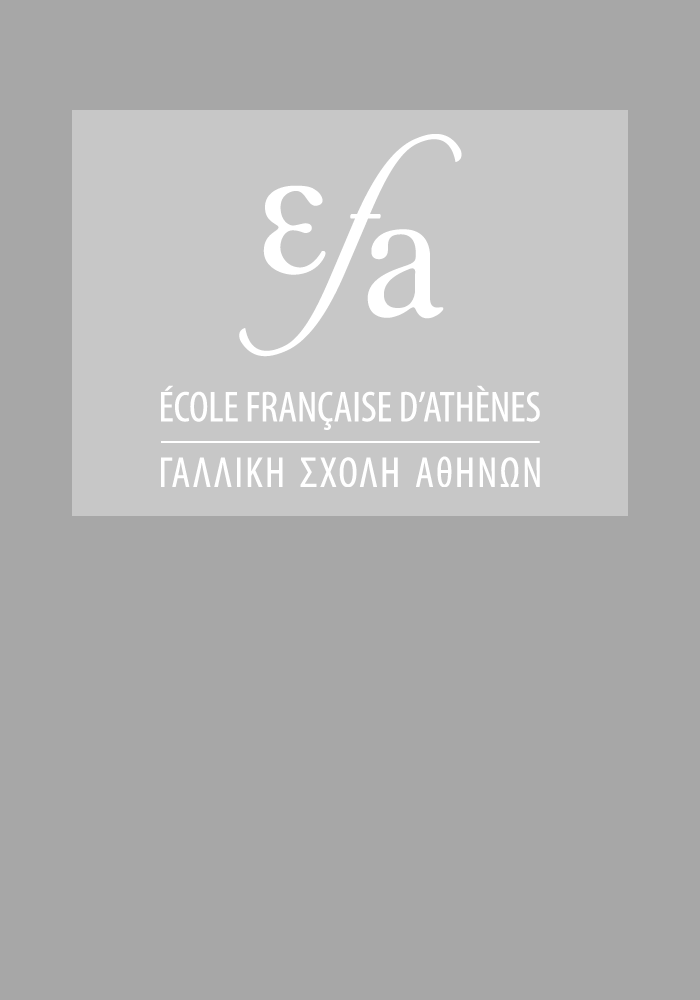L’étude du temple d’Apollon du IVe siècle à Delphes est le fruit d’une collaboration entre l’archéologue Pierre Amandry et l’architecte Erik Hansen. Les circonstances n’ont pas permis qu’elle aboutît à un texte commun. Aussi a-t-on pris le parti de reproduire les articles que Pierre Amandry a consacrés au monument et de les faire suivre de l’étude architecturale de Erik Hansen. Le but principal de cette dernière est de décrire la construction du temple pour ainsi dire pierre à pierre, en suivant les procédés des artisans, et de donner l’image la plus fidèle possible de l’affairement d’un chantier dans l’Antiquité. En l’occurrence, on a la chance unique de disposer aussi bien de la ruine du bâtiment que des fragments des comptes qui ont été dressés lors de sa construction et qui donnent une idée de l’organisation du chantier, de son évolution et de son coût. Les deux sources se complètent mutuellement et permettent d’établir le calendrier d’une construction qui s’est étalée sur trente-quatre années, de 367 à 333 av. J.-C., avec une interruption de dix années due à la troisième « guerre sacrée », entre 356 et 346 av. J.-C. Un changement d’architecte en 340, Agathôn succédant à Xénodoros, n’est apparemment pas sans rapport avec une modification introduite dans le projet d’aménagement de l’intérieur du temple, là même où siégeait le fameux oracle de Delphes.
The study of the fourth century BC temple of Apollon at Delphi is the outcome of a collaboration between the archaeologist Pierre Amandry and the architect Erik Hansen. Circumstances did not permit the creation of a common text. It has therefore been decided that the articles by Pierre Amandry on the monument should be reprinted, followed by the architectural study by Erik Hansen.
The main goal of the latter is to describe the temple stone by stone, by mapping the procedures of the artisans, and to give the most faithful image possible of the activities on a building site in Antiquity. As it happens, we are fortunate to possess not only the ruins of the building itself, but also fragments of the construction accounts drawn up during the work, which provide an idea of the organisation of the building site, its evolution and the costs involved. The two sources are complementary and permit establishing the construction calendar which stretches over a period of 34 years, from 367 to 333 BC, with a ten-year interruption due to the third 'sacred war" between 356 and 346 BC. A change of architect in 340, Agathon succeeding Xenodoros, appears to be connected with a reorganisation of the interior space in the area occupied by the famous oracle of Delphi.
The main goal of the latter is to describe the temple stone by stone, by mapping the procedures of the artisans, and to give the most faithful image possible of the activities on a building site in Antiquity. As it happens, we are fortunate to possess not only the ruins of the building itself, but also fragments of the construction accounts drawn up during the work, which provide an idea of the organisation of the building site, its evolution and the costs involved. The two sources are complementary and permit establishing the construction calendar which stretches over a period of 34 years, from 367 to 333 BC, with a ten-year interruption due to the third 'sacred war" between 356 and 346 BC. A change of architect in 340, Agathon succeeding Xenodoros, appears to be connected with a reorganisation of the interior space in the area occupied by the famous oracle of Delphi.
Avant-propos
Première partie, par Pierre Amandry 

1 « La ruine du temple d’Apollon à Delphes » - Bulletin de la classe des Lettres et des Sciences morales et politiques (Académie Royale de Belgique) 75 (1989), p. 26-47
2 « Chronique delphique (1970-1981). I,6. Temple d’Apollon » - BCH 105 (1981), p. 681-691
3 « Notes de topographie et d’architecture delphique. V. le temple d’Apollon » - BCH 93 (1969), p. 1-38
4 « Recherches sur la cella du temple de Delphes » - dans J.-G. Heintz (éd.) Actes du colloque Oracles et prophéties dans l’Antiquité, Strasbourg, 15-17 juin 1995, Travaux du centre de recherche sur le Proche-Orient et la Grèce antiques 15 (1997), p. 272-282
5 « Où était l’omphalos ? » - dans J.-Fr. Bommelaer (éd.), Delphes, centenaire de la « grande fouille » réalisée par l’École française d’Athènes (1892-1903), Actes du colloque Paul Perdrizet, Strasbourg, 6-9 novembre 1991, Travaux du centre de recherche sur le Proche-Orient et la Grèce antiques 12 (1992), p. 177-205
6 « Notes de topographie et d’architecture delphiques. IX. L’opisthodome du temple d’Apollon » - BCH 117 (1993), p. 263-283
Deuxième partie - Etude architecturale, par Erik Hansen 

Avant-propos de la deuxième partie
Abréviations bibliographiques
Chapitre 0. Introduction
Les relevés
Disposition de l’ouvrage
Préambule technique : Taille des pierres – Manipulation et termes techniques – Crampons – Goujons
Description de la ruine
Chapitre 1. La catastrophe de 373
Déformation de la ruine actuelle
Destruction du temple des Alcméonides
Autres destructions dans le sanctuaire
Chapitre 2. Le commencement des travaux
Rétablissement des fondations : Le rectangle extérieur – Consolidation du côté Ouest – Extension du plan – Fondations du rectangle intérieur
Autres constructions en matériaux de remploi : L’Ischegaon – Le péribole Sud et le trésor de Thèbes – Mur de terrasse à l’Est du sanctuaire
Les carrières : Le calcaire du Parnasse – Le poros de Corinthe
Chapitre 3. L’euthyntéria
Préparation de la pose : Établissement d’une courbure – Application des mesures
Disposition de l’assise : Taille et scellements
Fondations intérieures
Métrologie
Chapitre 4. La krépis
Les trois degrés : Faces antérieures – Dimension des degrés – Inclinaison des dalles
L’appareil : Conception des angles – Disposition de l’appareil
Détails de construction
Chapitre 5. L’assise de la plate-forme I
Krépis K I
Lambourdes du péristyle L 1
Construire avec des pierres brutes
Rectangle intérieur EUT : Métrologie
Crampons et organisation du chantier
Chapitre 6. L’assise de la plate-forme II
Préparations pour la pose
Pose des pierres
Lambourdes du pronaos
Chapitre 7. L’assise de la plate-forme III
Le dallage du péristyle: Technique de pose – Ordre de pose
Le toichobate et le stylobate IN ANTIS : Dimensions du sékos – Description des pierres – Restitution de l’assise T2 – Construction des murs de refend – Observations sur le dallage
Chapitre 8. Orthostates et murs
Orthostates : Description des pierres – Restitution des orthostates – Conclusion
Le socle intérieur : Description des pierres – Conclusion sur l’assise
Les murs de poros
Chapitre 9. Les portes
Les portes latérales : Traces sur le dallage – Restitution de l’encadrement
La grande porte
Chapitre 10. Le pronaos et l'opisthodome
Pronaos : Traces sur le dallage – Les bancs
La porte à claire-voie
La base de l’opisthodome
Chapitre 11. Les substructions des colonnades intérieures
Les cinq premières assises : Les fondations en poros – Assise de calcaire S 1 – Assise de calcaire S 2 – Rencontre avec les murs de refend
L’interruption de la colonnade Sud : La partie orientale – Le tronçon Ouest
Blocs errants de S 1 et S 2
Y avait-il un « Oikos » dans l’Adyton ?
Chapitre 12. Les nefs latérales
Le dallage des nefs latérales : Restitution de l’assise
Les Stylobates intérieurs S 3 : Description des pierres – Restitution de l’assise – Conclusion
Chapitre 13. Les substructions intérieures : Les fondations des lambourdes Est – Le massif latéral Nord P – Le massif latéral Sud Q – Le massif transversal R
Restitution des assises P-1 et Q-1
Fouille sous le massif transversal : Description des relevés
Ordre de construction
Chapitre 14. Les lambourdes de la nef médiane
Rapports avec les alentours
Technique de pose
Description des pierres
Restitution de l’assise
Chapitre 15. Le dallage de la nef médiane
Aire Est (dalles « 34 ») : Description des pierres – Restitution du dallage de l’aire Est
Aile Nord (dalles « 39 ») : Description des pierres – Restitution du dallage de l’aile Nord
Aile Sud (dalles « 34 »)
Conclusion sur le dallage de la nef médiane
Anomalies, hésitations, changements
Chapitre 16. Les colonnes doriques
Péristasis
Prostasis
Tambours ronds
Chapitre 17. L’entablement
L’architrave
La frise
Les larmiers
Couleurs des larmiers
Le chéneau
Le déclin
Chapitre 18. Reconstitution
La maçonnerie : La péristasis et les frontons – Le sékos – Les colonnades intérieures
La charpente : Calculs de statique – Détails de la charpente
Une vue d’ensemble
Les ateliers-hangars à Thyiai
Consommation de matériaux
Chapitre 19. Résumé et conclusions
L’organisation du chantier : Financement et administration – Les contrats – Les architectes – Les phases de la construction
Le cheminement de la construction : Destruction du sanctuaire et premières réparations – Rétablissement des fondations du temple et l’euthyntéria – Krépis et péristyle – Travaux sur le rectangle intérieur – Le dallage du péristyle et l’assise T 2 – Les murs du sékos et les portes – Le dallage des nefs latérales et l’interruption de la construction – Le dallage de la nef médiane – Fin des travaux
La construction vue à travers les comptes : Avant la guerre – Le temps de guerre (356-346) – Redémarrage des travaux (345-343) – Les stèles opisthographes (nos 46 et 47) – Les autres comptes des naopes (nos 48-66) – Le calendrier de la construction du temple
Les entrepreneurs et leur travail : Les carriers – Les forgerons – Les charpentiers – Les grands entrepreneurs – Marques d’entrepreneurs
Épilogue
Table des illustrations de la seconde partie
Table des matières
Dans la même collection
Des mêmes auteurs
Diffuseur(s)
Peeters publishers
61, Kolonel Begaultlaan
3012, Wilsele
Belgique
+32 16 24 40 00
Contact
Pour toute information - Πληροφορίες
École française d’Athènes
6, rue Didotou - 10680 Athènes
tel. +30 211 18 70 154





